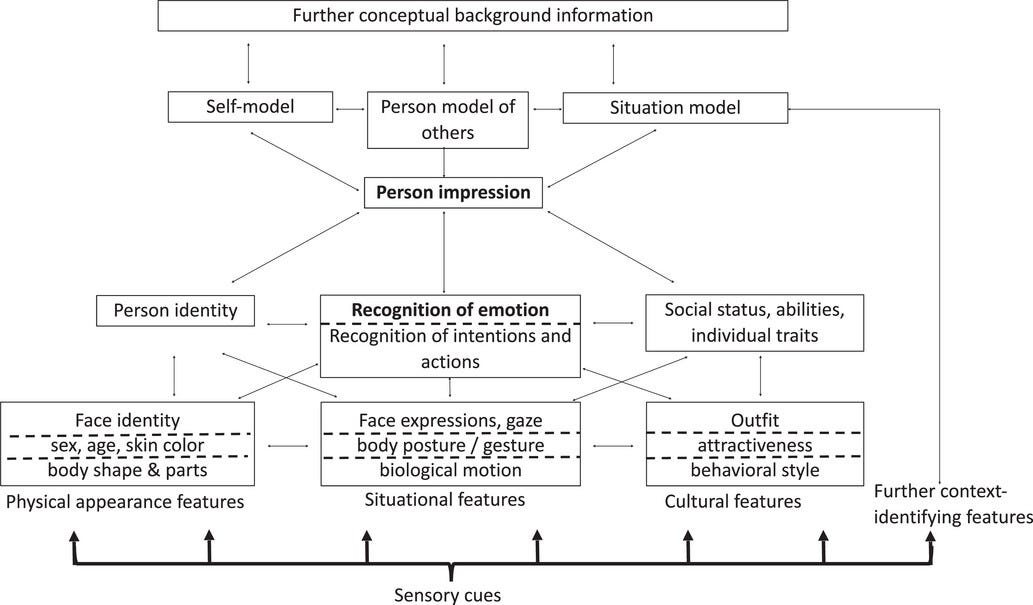Research Hit: How do We Recognise Human Emotions
A summary paper shows how nuanced emotional perception is
Isn’t the face the primary source of interpreting human emotions?!
Yes, that is what most of us believe. Emotional recognition tests also use faces with different facial expressions. Some of these expression are considered universal i.e. present in all cultures across the globe. Sometimes these are categorised (falsely I believe) as basic human emotions. They are actually basic human expressions.
But this is much more complex according to Leda Berio and Albert Newen of the University of Bochum in Germany.
Oh, what does influence our perception of human emotions then?
Well, a lot, but let me give you some examples.
First off, we have some situational interpretations i.e. we interpret and build an expectation based on a situation.
An example from the research is that almost everybody categorises an expression of fear as anger if told that the person had just been turned away from a restaurant despite having a reservation.
We also interpret fear from situations even if we can’t see facial expression such as in viewing a picture of a person from the back in front of an aggressive snarling dog. We automatically assume fear and may also in addition read body language cues.
So, situations lead us to predict emotions?
Yes, precisely and these, note, may also be cultural. However, we could also impose our own personal interpretation on this based on what we would do ourselves rather than that of another person.
Ok, so situations leads us to predicting emotions and hence may also lead us to misreading them.
Yes, and another factor is that contextual cues are also very important.
An obvious one is the gender of the person whose emotions we are reading. For example in women we are more likely to perceive a negative emotion as fear and in men we are more likely to interpret it as anger.
Wow, so gender changes emotional perception!
Yes, that is well known and researched, but also skin colour and cultural background. Not to mention other factors such as how people are dressed or perceived social status.
For example, we tend to perceive doctors as less emotional - this can also have positive or negative knock-on effects. A doctor may express the same emotion as a normal person but then be perceived as being cold and emotionless - which may be negatively taken on in certain situations. Alternatively it could also be seen as being professional.
So, that is a lot happening in emotional perception!
Yes, it is more than we may assume. And explains why we should be careful of some people’s interpretations of emotions - and why it can differ dramatically between different groups such as political parties or professional groups.
Here Berio and Newen’s summary of the influences:
From: Leda Berio, Albert Newen. I expect you to be happy, so I see you smile: A multidimensional account of emotion attribution. Philosophy and Phenomenological Research, 2024; DOI: 10.1111/phpr.13113
This is split into top down processes our own models of the world and situational cues.
So, basically a facial emotion has plenty of room for interpretation.
Precisely - obviously facial expressions are important in interpreting emotions but various factors can dramatically influence the interpretation of these.
But isn’t AI trained on these facial expressions?
Yes, and that could also be a problem. AI needs training data and in training for facial expression it would be thousand of pictures of different facial expressions that are labelled by humans (which is in itself problematic because humans will have different interpretations). This completely removes all contextual information. This could therefore make AI models for interpreting human emotions as problematic.
This will make AI interpretation risky, hit and miss, or completely lacking nuance if used incorrectly this could have a bunch of negative knock-on effects. Some people already over trust AI.
So, be careful of AI for recognising emotions.
Absolutely, and understand how your own emotional interpretations are always biased!
Reference
Leda Berio, Albert Newen.
I expect you to be happy, so I see you smile: A multidimensional account of emotion attribution.
Philosophy and Phenomenological Research, 2024
DOI: 10.1111/phpr.13113





